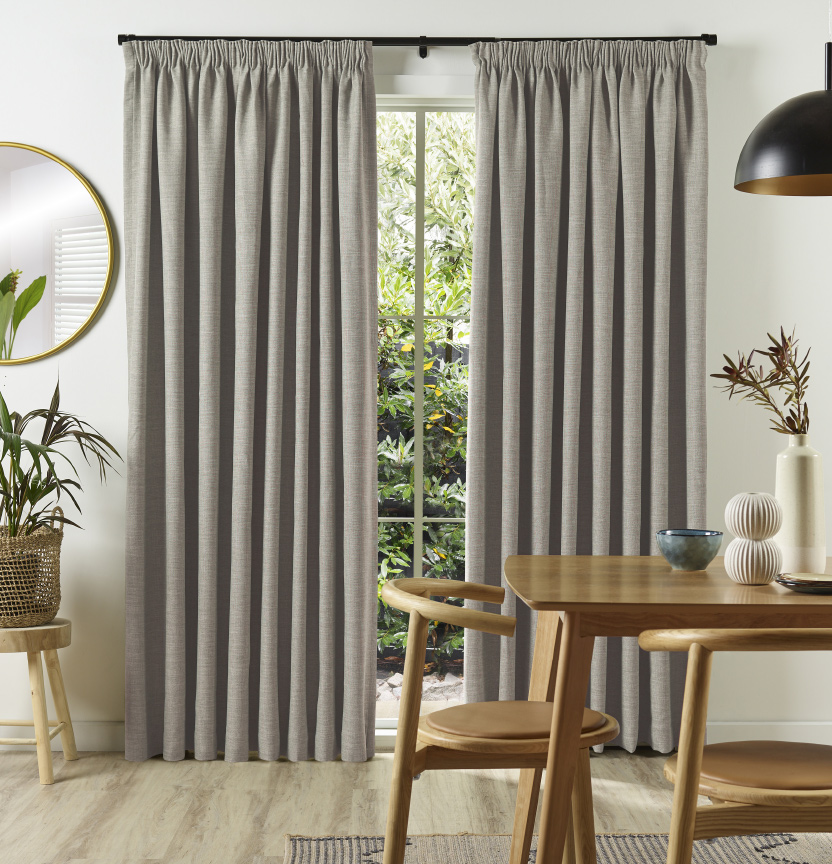 | ||
| Your browser is not supported. | ||
|
Please browse our site using any of the following options:
| ||
CURTAIN FABRIC CALCULATION

Level: Easy
What You'll Need:
- Fabric of your choice
- Thread to match
- Curtain tape (we stock several styles of heading tape to select from)
- Scissors
- Ruler or measuring tape
- Pins Dressmaking square
- Tailor's chalk or pencil
Making your own curtains is a great way to save money and design a one-of-a-kind feature that adds a personal touch to your room.
INSTRUCTIONS
A - Number of Fabric drops required
B - Drop length
C - Total Fabric meterage required
D - Total curtain tape meterage required
Example based on: 150cm wide window
x 240cm window drop length
Using a 150cm wide plain fabric
1.5 x fullness
Step 1
Measure the width of your window, and multiply it by 1.5 fullness (or 2.5 fullness for pleats) + seam allowance = 'A'
1.5 window width x 1.5 fullness = 2.25 (round to the nearest whole number)
3 drops required (A)
Step 2
Measure the drop of your window and add a 30cm seam allowance = (B) + 30cm seam allowance = (B)
2.4 + 30cm = 2.7m
2.7m (B)
A pattern repeat will change the amount of fabric required per drop.
To calculate:
Total drop Length (B) +30cm
Divide by the pattern repeat, and then round this to the nearest whole number.
Multiply this number by the pattern repeat
This gives you the new Drop length (B)
Step 3
A x B = C
3 x 2.7m = 8.1m (C)
Step 4
A X Fabric width (150cm)
3 x 1.5 = 4.5 (D)
In summary:
8.1m of fabric is required 4.5m of curtain tape is required.
Helpful Hint
Detachable curtain lining is a great way to improve the insulation of your existing curtains. It also helps to improve energy efficiency within your room.




